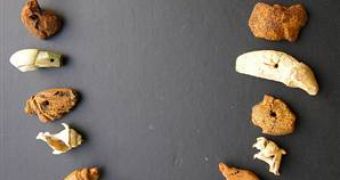Although this is not the first time when an ancient burial ground is found near Rome, the one recently discovered is amongst the few belonging to people of a lower social class. It is located near the main airport of today's Rome and was dated to the 1st, possibly the 2nd century. The remaining skeletons indicate that the men buried there had hard jobs, probably as manual workers who carried heavy loads on their backs at the harbor during the early days of the Roman Empire.
Gabriella Gatto, the spokesperson of the archaeology office, said that the vast majority of the 300 skeletons unearthed recently showed injuries such as joint and tendon inflammation, compressed vertebrae and other related spinal problems. "The injuries seem to hark back to work as laborers, in transport and carrying of heavy loads, in an especially humid environment, circumstances that make one think of the burial of individuals who worked in port areas of the city", Gatto added.
The discovery of this site presents archaeologists with a unique opportunity to learn about how people lived in the respective period. One of the skeletons found amongst the remains for example, was that of a man who had his lower jaw partially fused to the upper one, suggesting that the lower class of the Roman society cared for the disabled. It is likely that the man was fed through a hole in the teeth with liquid and semisolid nutrients and at the time of his death he was probably in his 30s. Considering the average lifespan in that period, one could say that he lived for a rather decent amount of time.
Amongst the skeletons, archaeologists also discovered items such as lanterns to guide the dead into the next life, out of which a ceramic and glass one decorated with a grape harvest, suggesting that the bond between the members of the lower class society was very strong. The newly found graveyard is also one of the most extensive ever found near Rome in the past centuries.
The tombs were made of common materials such as wood and roof tiles, further suggesting that the burial site belonged to a lower class. Two of the skeletons belonging to children bared gold earrings and an amber and seashell necklace (as seen in the featured image).

 14 DAY TRIAL //
14 DAY TRIAL //